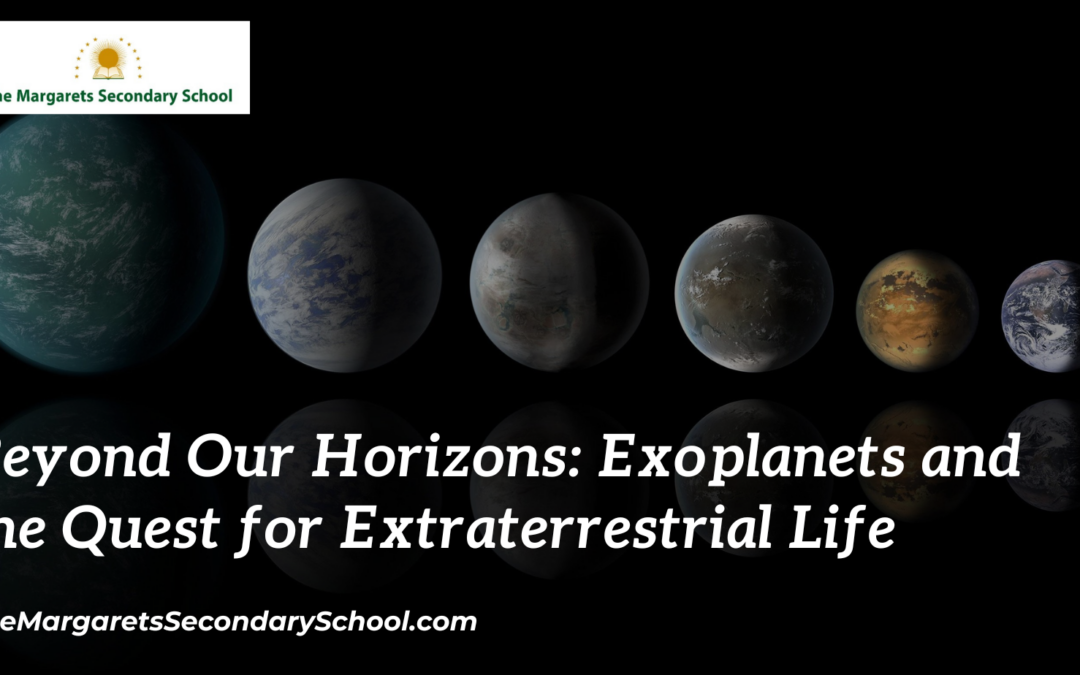Exoplanets and the Search for Extraterrestrial Life
In the vast expanse of the cosmos, beyond the familiar boundaries of our solar system, lies a frontier of exploration that ignites our curiosity and fuels our imagination—exoplanets. These distant worlds, orbiting stars beyond our Sun, hold the promise of answering one of humanity’s most profound questions: Are we alone in the universe? Join us on a journey into the realm of exoplanets and the tireless quest to discover signs of extraterrestrial life.
Exoplanets: Unveiling New Worlds
Until the mid-20th century, we knew of only one planetary system—our own. However, with advancements in astronomy and technology, scientists have revolutionized our understanding of the cosmos by detecting exoplanets—planets orbiting stars other than the Sun. These newfound worlds vary in size, composition, and distance from their parent stars, presenting an exciting opportunity to study the diversity of planetary systems.
The Goldilocks Zone: Habitable Exoplanets
Among the multitude of exoplanets discovered, some have captured our attention as potential candidates for habitability. These planets reside within the “Goldilocks zone,” also known as the habitable zone—a region around a star where conditions might be just right for liquid water to exist on the surface, a key ingredient for life as we know it.
Exoplanet Detection Methods
Discovering exoplanets is no simple task. Astronomers employ a variety of techniques to detect these distant worlds. The transit method observes the dimming of a star’s light as an exoplanet passes in front of it, while the radial velocity method detects the wobble of a star caused by the gravitational pull of an orbiting planet. Other methods, such as direct imaging and gravitational microlensing, provide additional avenues for exploration.
The Search for Extraterrestrial Life
The tantalizing question of whether life exists beyond Earth motivates astronomers, astrobiologists, and researchers across disciplines to scrutinize exoplanets for signs of habitability and biosignatures—indicators of life’s presence. These biosignatures include atmospheric compositions rich in oxygen or methane, as well as the detection of specific molecules that could hint at biological processes.
NASA’s Kepler and TESS Missions
NASA’s Kepler Space Telescope and the Transiting Exoplanet Survey Satellite (TESS) have been instrumental in the exoplanet revolution. Kepler observed a patch of the sky for years, detecting thousands of exoplanet candidates and confirming their existence through transit observations. TESS, on the other hand, scans the entire sky, discovering new exoplanets and providing insights into their characteristics.
The Future of Exoplanet Exploration
As technology advances, the field of exoplanet research continues to evolve. The upcoming James Webb Space Telescope (JWST), set to launch, promises to revolutionize our ability to study exoplanet atmospheres and potentially detect biosignatures with unprecedented accuracy. Moreover, ground-based observatories and next-generation space missions are poised to expand our understanding of these distant worlds.
Conclusion
The exploration of exoplanets represents a paradigm shift in our understanding of the cosmos and our place within it. As we uncover a tapestry of diverse worlds, each with its unique story and potential, we are compelled to confront the age-old question of whether life exists beyond Earth. Whether we find microbial life or more complex forms, the quest for extraterrestrial life serves as a testament to human curiosity, resilience, and our relentless pursuit of knowledge. The exoplanet frontier beckons, inviting us to peer into the abyss of the universe and uncover the secrets it holds.





